CHAPTER TEN
FINE DETAILS
LAMPS
This chapter covers two things that are dear to my heart with regard to ‘fine-detailing’ on model railways, namely loco and stock lamps, and the representation of figures. With regard to the former, from quite early times no train would be allowed to run without some form of telling its identity or route, or without a warning lamp at its rear. Certainly in the twentieth century, most trains would carry lamps to indicate their status. Other books from Crowood carry diagrams of the various lamp codes used by the railway to indicate the type of train a loco was hauling. By BR days most of this was standardized, with the exception of the Somerset and Dorset, which resolutely kept its own lamp codes right up to the end.
At times there were attempts to use discs instead of lamps in daylight hours, the thinking behind this being they were less likely to be damaged. Trains exclusively running on the ex-Great Eastern lines certainly had white discs to denote a train’s status, at least in daylight hours. There was an attempt by Edward Thompson to use discs instead of oil lamps on his locos, sitting on top of, and in front of, electric lights. The problem was that often the dynamos powering those electric lights either failed or dropped off in reverse running, and the electric lights, particularly those on the front footplate, were subject to damage. The LMS signalmen, whose lines some of the LNER locos had running powers over, wouldn’t accept locos without oil lamps, so he was thwarted there as well. Thompson’s successor, Arthur Peppercorn, also tried electric lamps on the three classes he was responsible for but they still had oil lamps sitting on their tops. Most lost their lamps completely or they were so damaged as to be useless. The Southern classified their trains by route rather than status, so used lamps and discs for that. There were many, many combinations.
My point is that all the trains running on a model railway depicting the steam age should carry the appropriate lamps/discs denoting the status of the train they’re hauling or the route they’re taking. Their trains should also have a tail lamp present with a red gel. With the former in mind, every loco running on ‘Little Bytham’ is lamped-up, as appropriate. It means a lot of lamps but I will not be swayed from this position. Most have lamps with a hole drilled in their bases, into which is put a tiny piece of BluTak. The lamps are then positioned on the lamp brackets, as appropriate. Many RTR loco lamp brackets are useless and snap into oblivion at such treatment. I replace the lot with brass strip, that being the case. The first diesels carried discs as well to identify their trains. Locos of both steam and diesel types on the Western often carried three-character codes denoting their trains, particularly on busy summer Saturdays. Later diesels had four-character headcode boxes denoting which train they were hauling.
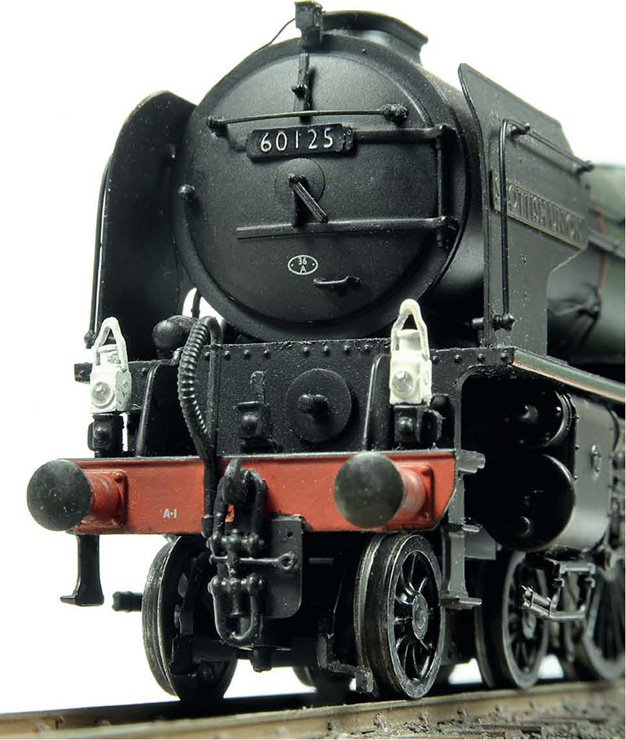
One prejudice against fitting loco lamps, particularly in 4mm scale, is how much too big some of the proprietary products are. This modified Bachmann A1 carries Springside’s BR loco lamps. They are way too big and I wouldn’t use them, these only being posed for this picture.
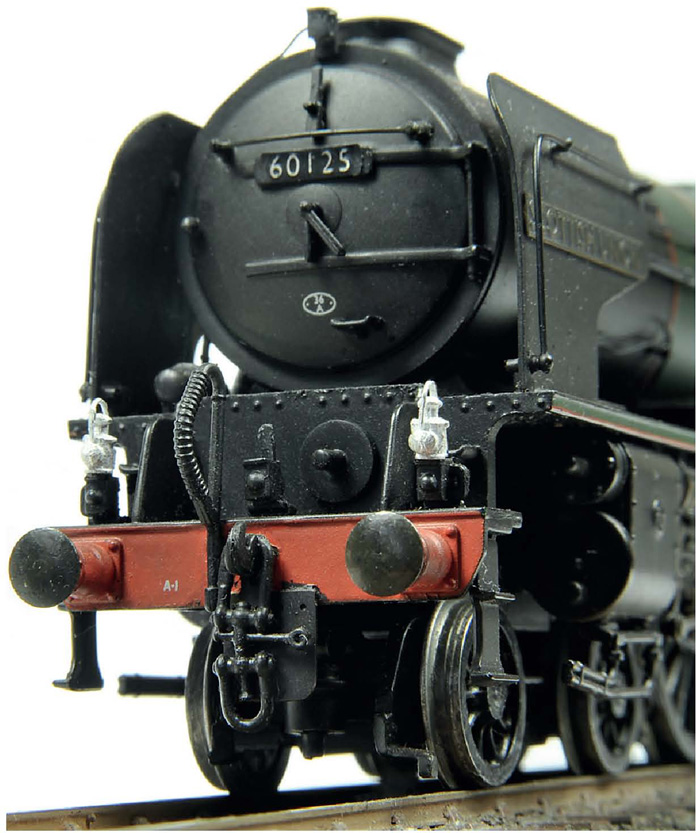
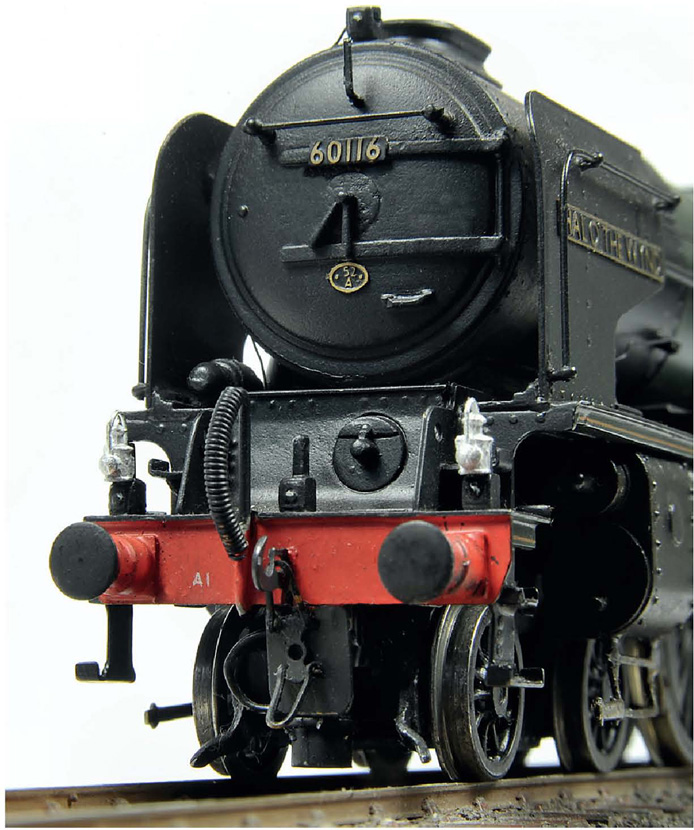
Fear not, because there are much nearer-scale alternatives; in this case those LNER loco lamps made by Lanarkshire Model Supplies. These are much nearer the right size and sit very neatly above the electric lamps on the modified Bachmann A1 and also one of my DJH A1s.
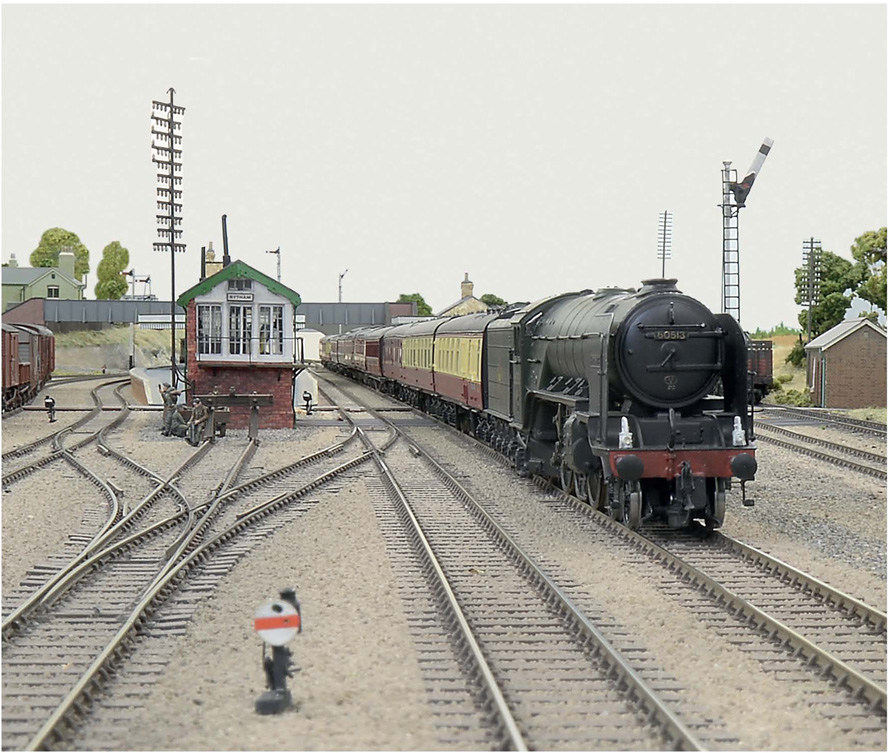
In fairness, Springside’s 4mm LNER loco lamps are much nearer scale, as shown here on the front platform of a DJH A2/3 I built. Toning the lamps down with a dab of dirty thinners also helps. Were this express not carrying the correct code, the signalman would telegraph the next signal box with instructions to stop it!
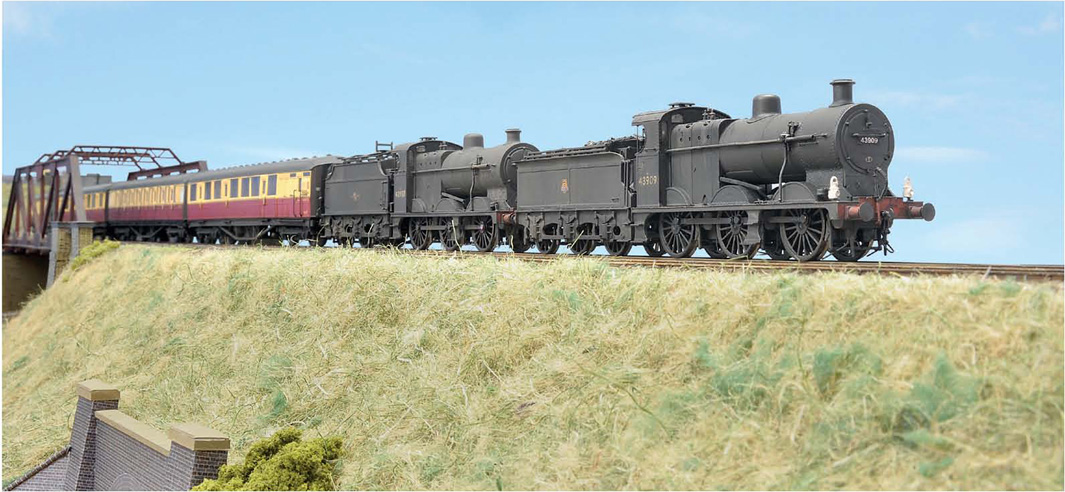
With a double-headed train, like this summer-Saturday excursion running on the MR/M&GNR bit of my railway, only the leading loco need carry lamps, in this case denoting an express passenger train; the term ‘express’ being rather anomalous with the ‘Muddle & Go Nowhere Railway’.
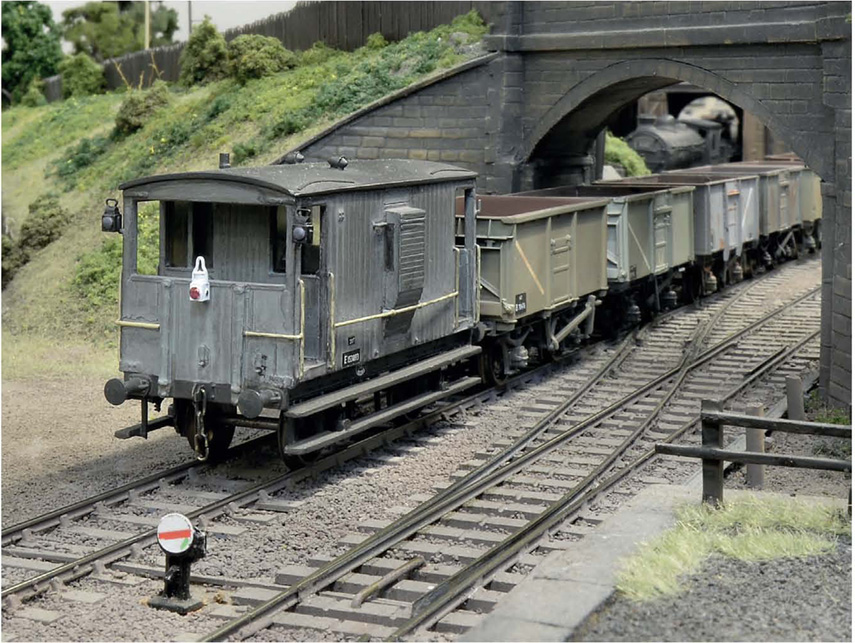
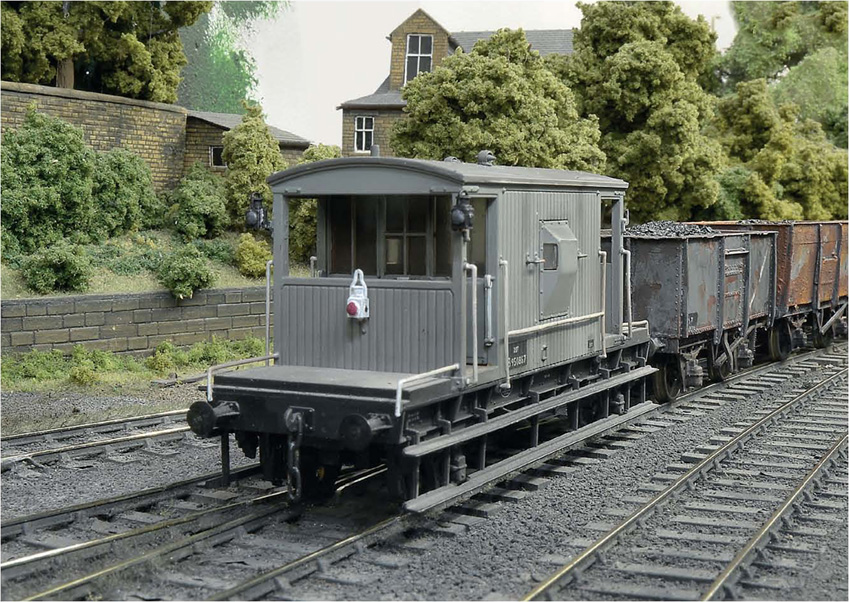
Tail lamps are of equal importance with regard to the running of trains. Were one missing, a signalman would immediately send ‘train divided’ to the next ‘box. These LMS tail lamps are made by Lanarkshire Model Supplies.

Loco lamps were not always white; the Midland, typically, used red, as seen here on Bob Essery’s ‘Dewsbury’ in Scale Seven. Many LMS locos used black lamps and the GWR often used red lamps.

Ancient railways used discs of all kinds to denote the status of their trains; note the white disc with the red-cross in it on one of the locos on the wonderful 7mm layout of Ian Hopkins.
FIGURES
In my opinion, for such small items, little can spoil a model railway scene as much as poor figures. Too many are provided as caricatures, depicting figures involved in brawls or Olympic activities. A static figure is a tiny snapshot in time and should, in my view, be shown at rest. In the same way with regard to lamps, none of my locos run without a crew. I’m not so concerned about populating all my carriages and brake vans with tiny inhabitants, so just sprinkle a few here and there, either in corridors or against a window. If you are modelling a terminus where empty stock movements take place, then what to do with the figures becomes a problem. Nobody, as far as I know, has successfully captured the passengers getting off or boarding trains at a station. So, figures on ‘Little Bytham’ are few and far between and adopt poses that, to me, are much more normal than those showing vigorous activity.
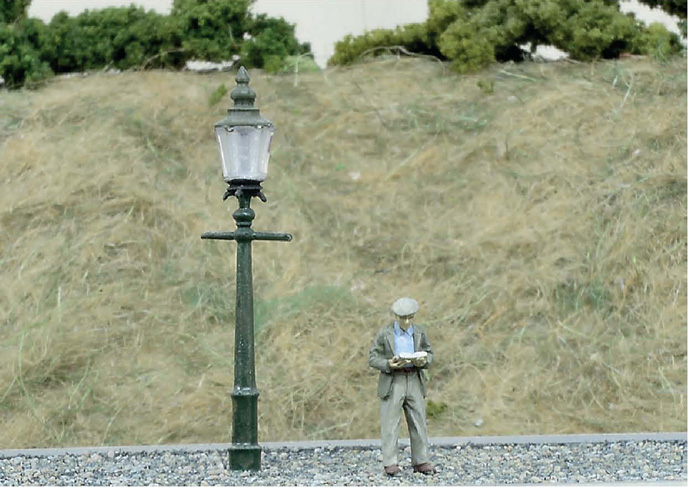
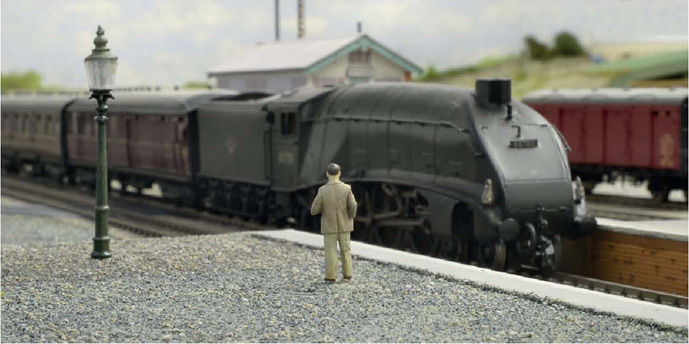
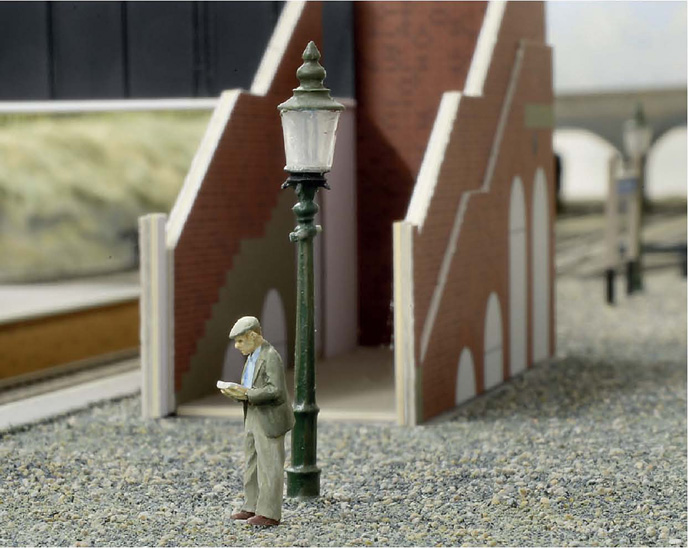
These beautifully natural little people were made from Monty’s Models (Dart Castings) and painted exquisitely by Tim Elcock. They were presented to me as a gift for the layout.
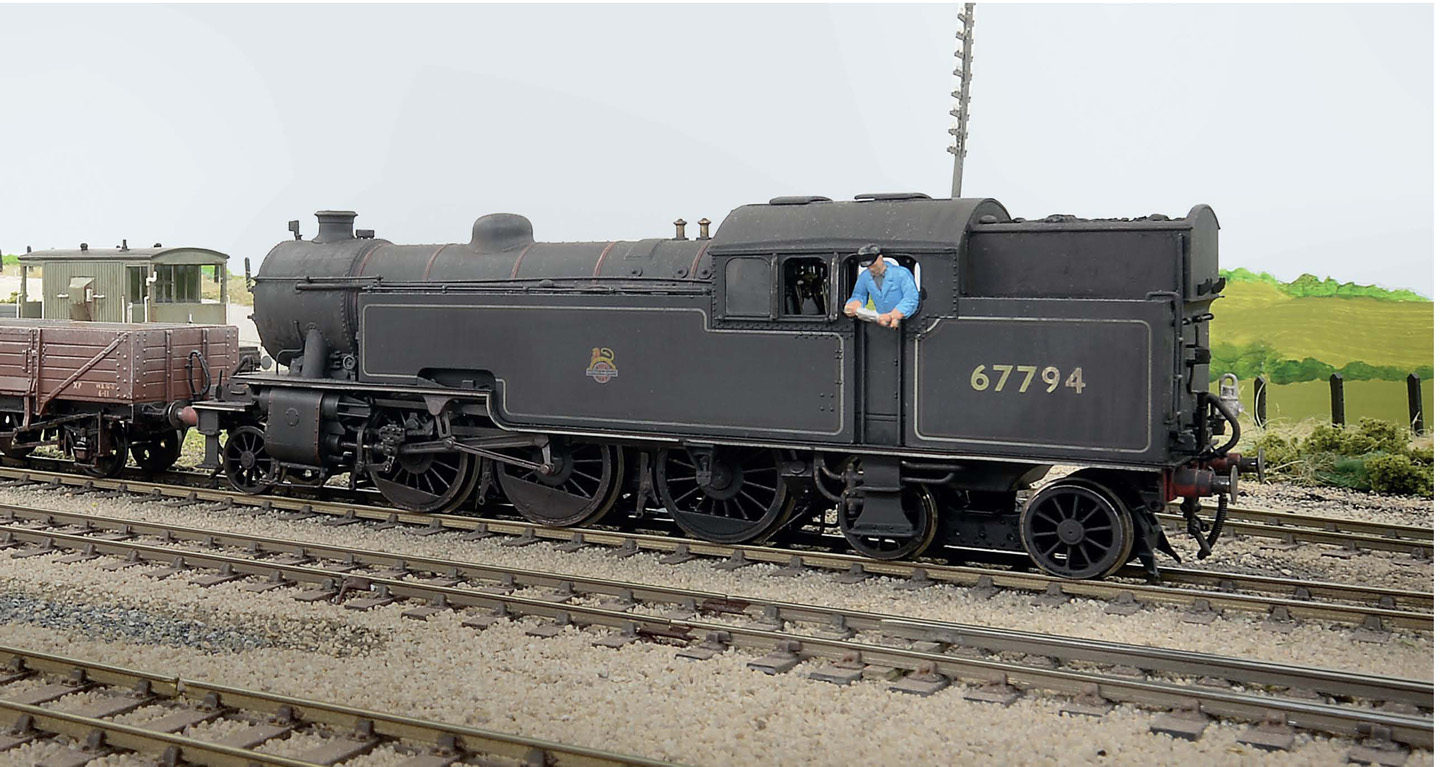
Even tank locos should have drivers and firemen in them. In this case one of the crew casually reading his paper as his loco shunts (he’s not permanently fixed in this pose).
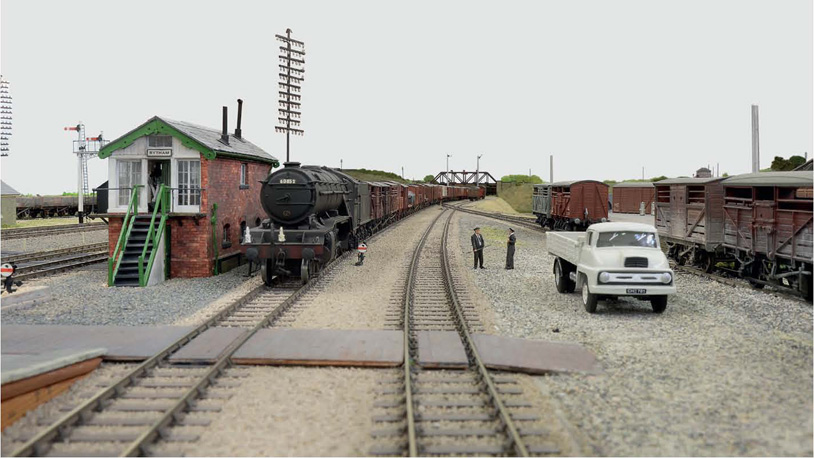
In the days before ‘high-vis’ vests, two shunters indulge in conversation oblivious to the passing of a V2 on a fast freight (note the correct lamp code for this fully fitted train). These too were a gift, in this case from Paul Marshall Potter. They are beautifully observed.
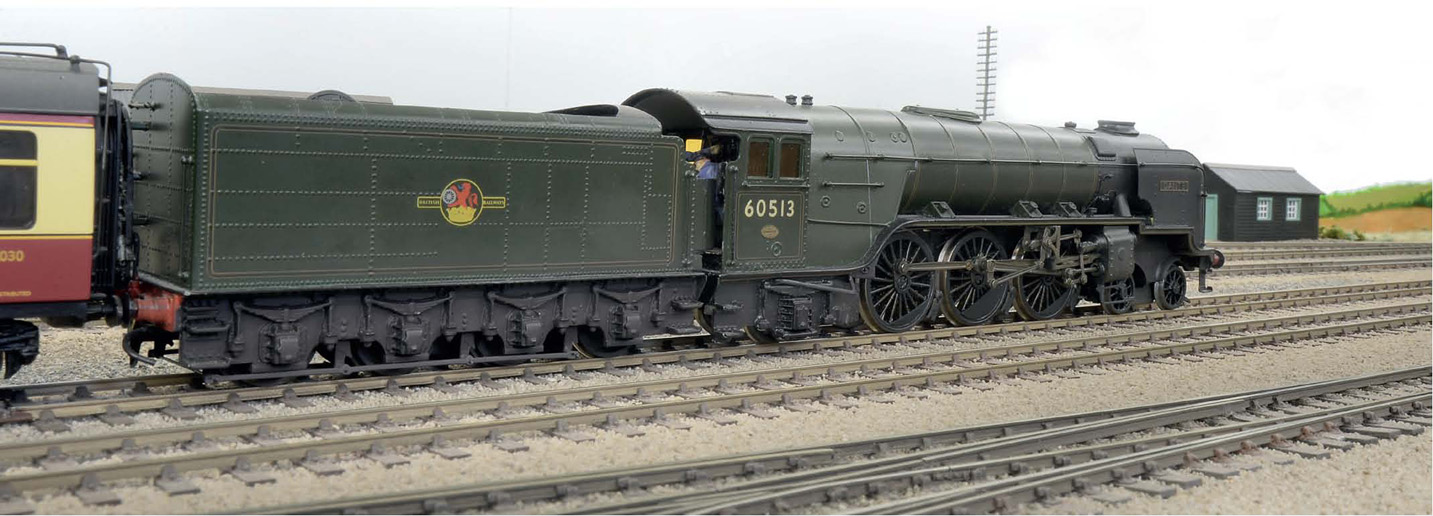
As with a tank loco, even engines with big cabs should have crews because they are visible, particularly from this sort of angle.
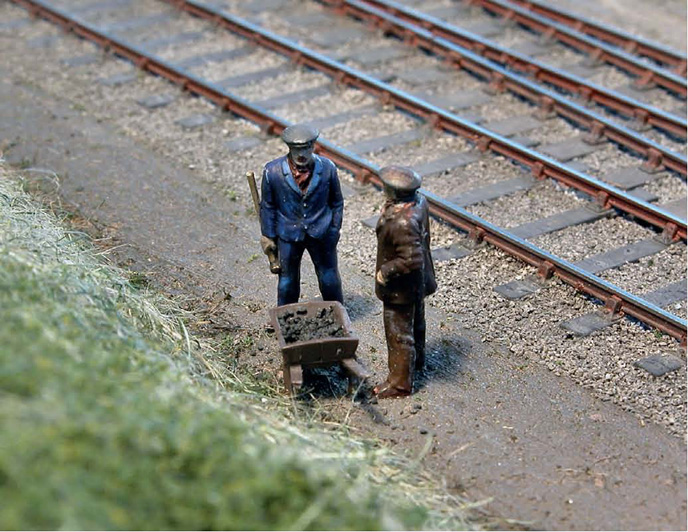
More exquisite period figures, in this case two labourers on Tony Gee’s ‘Tickhill and Wadworth’.

Many figures come ready-painted, though at a cost. The likes of Dart Castings sell unpainted figures in packs, in this case railway workers. I find the easiest way to paint them is to solder them first to scrap etched strip and apply car aerosol grey primer. Once dry, each can then be cut out from the strip, leaving a little square on which to stand.

With just a few dabs of further paint, the crews can then be stuck into place with superglue, in this case into the cabs of a pair of 4Fs.

















